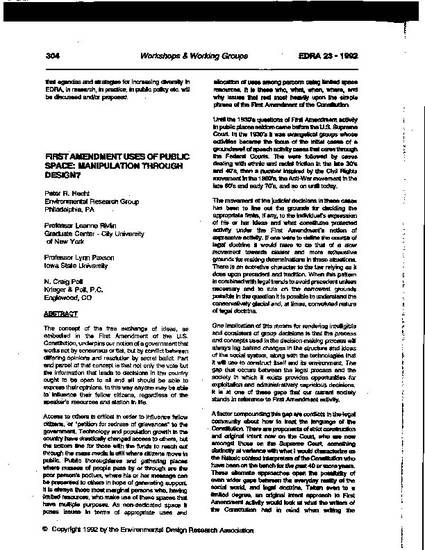
Presentation
First Amendment uses of public space: Manipulation through design?
Equitable and Sustainable Habitats: Proceedings of the Twenty Third Annual Conference of the Environmental Design Research Association
Document Type
Conference Proceeding
Disciplines
Publication Version
Published Version
Publication Date
1-1-1992
Conference Title
Twenty Third Annual Conference of the Environmental Design Research Association
Conference Date
April 9–12, 1992
Geolocation
(40.0149856, -105.27054559999999)
Copyright Owner
Environmental Design Research Association
Copyright Date
1992
Language
en
File Format
application/pdf
Citation Information
Peter R. Hecht, Leanne Rivlin, Lynn Paxson and N. Craig Poll. "First Amendment uses of public space: Manipulation through design?" Boulder, CO, United StatesEquitable and Sustainable Habitats: Proceedings of the Twenty Third Annual Conference of the Environmental Design Research Association (1992) p. 304 - 305 Available at: http://works.bepress.com/lynn_paxson/7/

The concept of the free exchange of ideas, as embodied in the First Amendment of the U.S. Constitution, underpins our notion of a government that works not by consensus or fiat, but by conflict between differing opinions and resolution by secret ballot. Part and parcel of that concept is that not only the vote but the information that leads to decisions in the country ought to be open to all and all should be able to express their opinions. In this way anyone may be able to· Influence their fellow citizens, regardless of the speaker's resources and station in life.